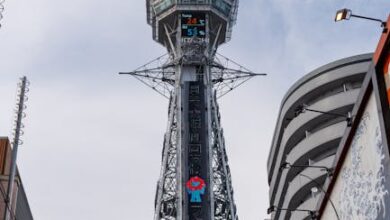The Core Challenge: Bridging Language and Reality for Robots

Imagine telling your robot, “Please grab the blue mug from the second shelf on the left, next to the coffee maker.” For us, it’s a simple, everyday request. For a robot, until recently, this was a mind-boggling cascade of complexities. Most robots excel at navigating a defined space, avoiding obstacles, and perhaps picking up a generic “mug.” But understanding “blue,” “second shelf,” and “next to the coffee maker” simultaneously, identifying that *specific* mug, and then executing the task? That’s a whole new ball game.
This challenge—bridging the vast gap between human natural language and precise robotic action—has been a holy grail in AI and robotics. We’re not just talking about moving from point A to point B anymore; we’re talking about nuanced, human-like comprehension and interaction. Thanks to groundbreaking research, particularly the fusion of advanced language models like Llama 2 with sophisticated mapping systems like IVLMap, that future is arriving faster than we might have imagined. This powerful combination is paving the way for robots that don’t just follow commands, but truly *understand* them, unlocking unprecedented levels of autonomy and utility.
The Core Challenge: Bridging Language and Reality for Robots
For years, robotic navigation relied heavily on precise coordinates or object recognition that was often pre-programmed and limited. A robot could be trained to identify “a chair,” but ask it to distinguish between “the third chair on the left” or “the nearest black sofa,” and you’d hit a wall. The problem isn’t just identifying an object; it’s about understanding its unique identity within a spatial context, its specific attributes, and its relationship to other objects in the environment.
Think about the difference between a simple GPS telling you to “turn left” versus a friend telling you, “Go past the big oak tree, then turn left at the house with the red door.” Human commands are rich with descriptive details and relative spatial relationships. We naturally use terms like “the fourth black chair across from the table,” demanding both sequence and attributes to be recognized, alongside precise spatial awareness. Traditional robotic systems often lack the semantic depth to process such multifaceted instructions.
Beyond “Chair”: Understanding “The Third Black Chair on the Left”
The limitation lies in how robots perceive and represent their world. Many existing systems create impressive 3D maps for navigation, but these maps often lack the crucial layer of instance-level semantic information. They might know there’s an object that is a “chair,” but not that it’s *Chair A*, which is black, worn, and currently next to *Table B*. This level of detail, often referred to as instance-level semantics, is absolutely vital for robots to interpret and act upon the kind of everyday linguistic commands we humans take for granted.
Without this capability, robots are confined to rudimentary interactions. To truly integrate them into our lives, whether in smart homes, complex industrial settings, or even care facilities, they need to evolve. They need to understand not just *what* something is, but *which one* it is, *where* it is in relation to other things, and *what its characteristics* are. This is precisely the nuanced understanding that the Llama 2-IVLMap combination aims to deliver.
IVLMap: Building a Smarter Semantic World for Robots
At the heart of this advancement is IVLMap, an innovative approach built upon existing VLMaps. While VLMaps already offered a robust foundation for visual language navigation, IVLMap takes it several significant steps further. Its core objective is to construct semantic maps that aren’t just 3D representations of the environment, but also rich repositories of instance-level information and detailed object attributes.
Imagine a digital twin of a room, but one where every object isn’t just a generic polygon. Instead, each “chair” is unique—Chair #1, which is red, Chair #2, which is black and broken, and so on. IVLMap achieves this by first building a 3D reconstruction map, often in a bird’s-eye view, from RGB-D data. This provides the fundamental spatial layout. The real magic, however, comes from layering on the instance-level semantic information and object attributes. This means identifying individual objects, assigning them unique identifiers, and cataloging their specific properties like color, size, and even condition.
From Pixels to Purpose: How IVLMap Constructs Its World
This process is crucial. By explicitly including instance-level semantic information and object attributes, IVLMap equips robots with the ability to process those intricate linguistic commands we discussed earlier. It’s the difference between a robot seeing a collection of furniture and a robot understanding a meticulously organized database of named, described, and spatially related objects. When a command comes in for “the third chair on the left” or “the nearest black sofa,” IVLMap’s comprehensive map provides the specific data points needed to pinpoint that exact item, not just a generic category. This foundational understanding transforms the robot’s perception from basic geometry to meaningful context.
Llama 2 and IVLMap: The Dynamic Duo for Natural Language Navigation
Having a semantically rich map like IVLMap is one thing; making a robot *use* it effectively through natural language is another. This is where the powerful capabilities of Large Language Models (LLMs) come into play, and specifically, why the researchers chose Llama 2 as a key component. The synergy between Llama 2 and IVLMap is truly where the intelligence manifests, enabling what the researchers call “zero-shot instance-level object goal navigation from natural language.”
Here’s how it works: When a human delivers a natural language command—say, “find the closest green box under the desk”—Llama 2 steps in as the interpreter. It meticulously parses the command, breaking it down into its constituent parts: the object name (“box”), its attributes (“green”), and its instance information (“closest,” “under the desk”). This decomposition is critical because it translates the ambiguity of human speech into structured, actionable subgoals that the robot can process.
Once Llama 2 has understood and segmented the command, it then interfaces with IVLMap. Leveraging a comprehensive set of advanced function libraries specifically tailored for IVLMap, Llama 2 generates executable Python robot code. This code, informed by the LLM’s interpretation and IVLMap’s detailed semantic data, directs the robot to perform the precise actions required. It’s not just understanding; it’s translating understanding into practical, robot-friendly instructions. This allows robots to respond to commands that are far more nuanced than those handled by previous zero-shot navigation systems, which often struggled with such specific attribute and instance requirements.
The Power of Open Source: Llama 2’s Role in Practical Deployment
It’s also worth noting the choice of Llama 2, specifically the Llama-2-13b-chat-hf model from Hugging Face, for this task. While other LLMs like ChatGPT APIs are powerful, the use of an advanced open-source model like Llama 2 is a significant step towards more accessible and customizable AI robotics solutions. Open-source models empower researchers and developers by providing transparency and flexibility, fostering innovation without the reliance on proprietary systems.
Furthermore, the researchers didn’t just plug in Llama 2; they optimized it for practical deployment. By employing GPTQ, a one-shot weight quantization method, they compressed the model from 8 bits to 4 bits. This technical refinement significantly accelerated the model’s inference speed by approximately 30% without a notable loss in performance. This is crucial for real-time robot operations, where quick, responsive processing is paramount. It demonstrates a holistic approach, not just in developing a theoretical combination, but in engineering it for efficient, real-world application.
Conclusion
The combination of Llama 2 and IVLMap represents a pivotal leap in robot control and human-robot interaction. We’re moving beyond simple object recognition to a future where robots can genuinely comprehend our nuanced, natural language commands, pinpoint specific objects by their unique attributes and spatial relationships, and then execute tasks with remarkable precision. This isn’t merely an incremental upgrade; it’s a fundamental shift in how we envision and interact with autonomous systems.
Imagine the implications: robots in logistics navigating complex warehouses based on spoken instructions for “the third palette of blue boxes,” or household assistants retrieving “the black remote on the coffee table next to the vase.” The research by Jiacui Huang, Hongtao Zhang, Mingbo Zhao, and Wu Zhou lays a robust foundation for robots that are more intuitive, more capable, and ultimately, more seamlessly integrated into our daily lives. As LLMs continue to evolve and mapping technologies become even more sophisticated, the line between human instruction and robotic execution will blur further, bringing us closer to truly intelligent and helpful robotic companions.





